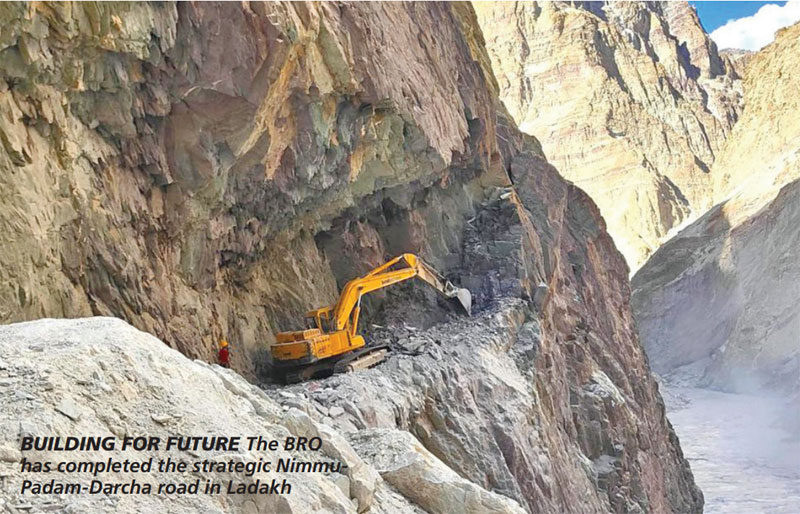A Race Against Time
Mohammad Asif Khan
On 15 June 2020, in the remote Galwan Valley, a tense confrontation unfolded between Indian and Chinese troops. The clash, devoid of firearms, resulted in casualties on both sides. Many soldiers succumbed to their wounds, exacerbated by the freezing temperatures of the region. The inhospitable terrain and extreme cold took a toll on those who fought on the border.

Following the clash, satellite imagery revealed that China had constructed new structures near the site of the clash. These included bunkers, tents and storage units for military hardware, overlooking the Galwan river. China is persistently upgrading roads opposite Eastern Ladakh and reinforcing alternative routes around its side of the border.
China has a significant advantage due to its superior infrastructure along the line of actual control (LAC). Their well-developed road networks, bridges and logistical support systems allow for faster troop movement and efficient deployment. In contrast, India needs more connectivity and facilities for soldiers stationed in these remote areas.
Due to the border crisis, India deployed approximately 60,000 troops along its disputed northern border with China, prompting the government to accelerate the development of border infrastructure. The Border Roads Organisation (BRO) took up key projects across the region. These initiatives aimed to bridge the gap between India and China in terms of infrastructure capabilities. Roads, tunnels, airfields and bridges became strategic assets, not only for troop deployment but also for bolstering India’s defensive posture.
In January 2023, the Chief of Army Staff Gen. Manoj Pande said that India had constructed more than 2,000 kilometres of border roads in the past five years. General Pande noted significant investments in Ladakh, including around INR 1,300 crores over the last three years for infrastructure and habitat improvements. He also highlighted the completion of habitats for 55,000 troops and 400 guns in the Eastern Ladakh sector in the past two years.
In March 2023, the Indian government established a committee of secretaries to expedite infrastructure projects along the LAC. This committee involves ministries such as defence, road transport, environment, railways and power.
The budget for the BRO has been increased to INR 50 billion for the fiscal year 2023-24, reflecting a 43 per cent rise from the prior year. Additional reforms to expedite progress involve augmenting the administrative and financial authority of BRO executives, systematically modernising construction techniques and easing some environmental restrictions.
The BRO has inaugurated 90 strategically significant infrastructure projects, collectively valued at over INR 2,900 crore. Defence Minister Rajnath Singh inaugurated a 120-metre-long Class 70 bridge over the Shyok River on the Darbuk–Shyok- Daulat Beg Oldi (DBO) Road at an altitude of 14,000 feet, facilitating the Army’s movement of heavy tanks and artillery.
Key Projects
Sasoma-Saser La-Brangsa-Gapshan-DBO Road: The BRO has made significant progress in constructing the Sasoma-Saser La-Brangsa-Gapshan-DBO Road. Dubbed the world’s first glaciated road, it is a critical infrastructure project along the LAC in Eastern Ladakh. This project is part of Project Himank, initiated in August 1985, with the primary objective of building and maintaining motorable roads in Ladakh to enhance connectivity and security along the LAC.
The Sasoma-Saser La-Brangsa-Gapshan-Daulat Beg Oldi Road connects Sasoma in the Nubra Valley to the northernmost military base at DBO. It serves
Subscribe To Force
Fuel Fearless Journalism with Your Yearly Subscription
SUBSCRIBE NOW
We don’t tell you how to do your job…
But we put the environment in which you do your job in perspective, so that when you step out you do so with the complete picture.








